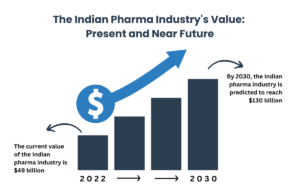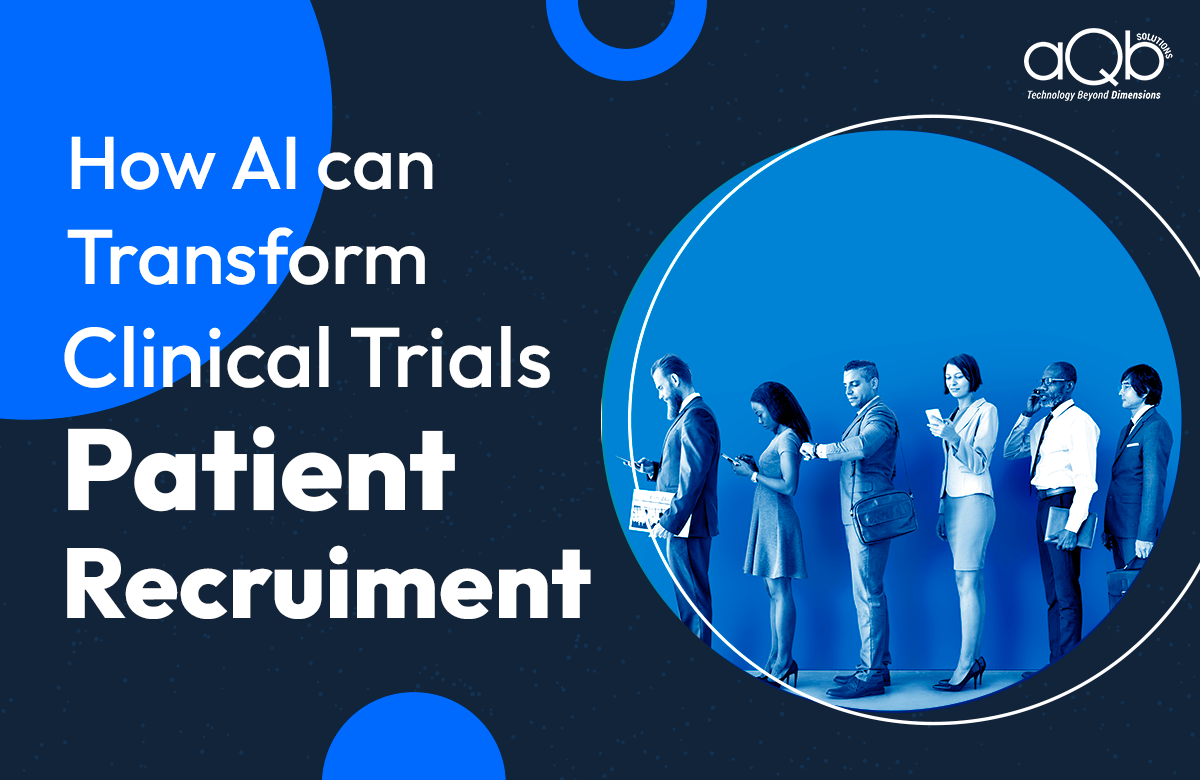The Indian pharmaceutical industry has been at the forefront globally when it comes to the supply of medicines at affordable prices. With advanced R&D capabilities and low labour cost, India supplies more than 20 percent of global generic medicine volumes.
As pharma companies struggle with pricing pressures and expiring patents in developed markets, they are beginning to expect more from the emerging markets. India has a bright medium- and long-term future as one of the largest economies in the world.
India is one of the markets where the long-term prospects for branded generic medicines is the best. With a major out-of-pocket segment and limited government price intervention, India seems to be set to sustain an intense preference for branded generics.
The growth momentum for the Indian pharmaceutical market has changed, along with the central question about it, which is now – How can the pharmaceutical market in India scale up to a higher growth trajectory, and attain its full potential? The question CEOs are asking is, “How can we establish undisputed leadership in this important market?”
What the Future of the Indian Pharma Industry Looks Like?
By 2030, the Indian pharma industry is predicted to reach $130 billion and establish itself as the leading medicine provider to the world, as stated by the Secretary General of Indian Pharmaceutical Alliance (IPA), Sudarshan Jain. The current value of the Indian pharma industry is $49 billion, and it makes the third largest pharmaceutical industry in the world.

According to the National President of Indian Drug Manufacturers Association (IDMA), Dr. Viranchi Shah, cluster manufacturing and Production Linked Incentive Schemes (PLIs) are contributing to the growth of the Indian pharma sector. According to him, the country aspires to be number one over the next 25 years.
He stated that cluster manufacturing and PLIs will lower the country’s dependence on imports. He outlined, “When India completes its 100 years of independence, India in 2047 will be a $500 billion industry. PLI 1.0 and 2.0 are vital for India to achieve this goal”
Hurdles on the Way to Growth
While the future looks bright for Indian pharmaceutical companies with huge growth opportunities, there are challenges that hinder Indian pharma companies from experiencing the growth. Two of these challenges are – revenue leakage and missed sales opportunities.
Revenue leakage is a prevalent and significant problem the pharmaceutical industry faces.
The scope of the problem, accompanied by increasing pressures on revenue and pricing from different stakeholders in the healthcare world – advocacy groups, government, providers, and payers – makes revenue leakage reduction of utmost importance for pharma organizations.
Fortunately, big data, advances in AI, and process automation enable pharma companies to create capabilities that allow them to proactively monitor, detect, and mitigate avoidable erosion from the bottom-line revenue.

Causes of Pharma Revenue Leakage
Several external and internal factors may lead to avoidable revenue leakage for pharma companies. Internally, the key drivers are often poor data management, outdated systems, and inadequate business processes. Externally, the chief drivers include outdated technology platforms, lack of incentives to resolve data problems at customers or wholesalers, and improper data entry.
Following are the chief reasons for avoidable revenue leakage in pharmaceutical companies:
-
Rebate Issues or Errors
In spite of many pharma companies having strong validation processes with several layers of business rules checks, they still encounter many duplicate rebates. If they are detected in subsequent audits, they are not correctly reversed. Another cause of leakage is rebate aggregators submitting claims under several subcontracted plans to get the highest possible rebate.
With contracting and payer management starting to intensify for medical benefit therapies, adjudication of rebate for infused therapies, which often comprise complex dosing regimens bring several new challenges. The traditional systems and processes created for pharmacy benefit drugs don’t have the capability to handle. Dosing regimens, sites of care, and multiple indications make it necessary to use complex business rules that are difficult to implement with existing technologies and tools.
-
Chargebacks
For pharma companies, there can be two key types of chargeback leakage. The first is customer management. With healthcare having a dynamic nature, making sure that the right customers receive the right price at the right time, is hard to audit and manage.
The second is transaction management. Because of the timing of transactions and reporting issues, recouping chargebacks paid on transactions like partial payments, duplicates, and reversals, is often beyond the capability of existing processes.
-
Duplicate Chargebacks
In this issue, if an item is returned to a wholesaler and is then resold, then, a chargeback is generated twice.
-
Discrepancies in Returns
In some cases, only a part of an order is returned, but the full credit is pursued.
-
Hidden Shortages
This involves customers claiming that their order has been partially fulfilled, and they attempting to make a partial payment.
How Pharmaceutical Companies can Curb Revenue Leakage
Addressing a widespread problem like revenue leakage requires a comprehensive program. To take a holistic approach to addressing revenue leakage, pharma companies need to tackle the external and internal drivers simultaneously. However, poor or disconnected data makes it extremely difficult to do this. Even highly robust data systems need dynamic insights and intelligence for keeping up with constantly changing behavior patterns.
Here are three tips for pharma companies to stem revenue leakage:
-
Get the Data in Order
Data is the foundation to get the required visibility to find out the sources of leakage that are often hard-to-find. Data must be well-organized, clean, and accessible, so that analysts can easily check out a suspicious pharmacy’s chargebacks, rebates, and sales .
Integrating various commercial data sets and managed markets in an interconnected data ecosystem, is vital for mitigating revenue leakage. These include Medicaid/Medicare/Commercial claims and rebates, copay program sales, 867 distributor sales, and chargebacks.
In the absence of integrated data sets, pharmaceutical organizations are often compelled to restrict their revenue leakage checks and analyses to within data silos. But this doesn’t give them the entire picture.
It will help to have a gross-to-net data fabric (an interconnected data ecosystem capturing the relationships, transactions, and interactions across several mastered entities in the pharma value chain) to unlock the full potential of revenue leakage.
-
Improve your AI Capabilities
Today, data brings the big challenge of making sense of it. Artificial intelligence effectively enables companies to discover anomalous patterns across different integrated data sources. Some machine learning advances have become prevalent in other industries, like insurance and banking. These are generative learning, unsupervised machine learning, graph algorithms, and anomaly detection.
These advances can help pharma companies create an AI-driven early warning system, which identifies potentially anomalous transactions or entities across chargebacks, rebates, and patient benefits.
-
Leverage Intelligent Process Automation
Once your pharma organization has improved its AI capabilities and enhanced its foundational data infrastructure, you can automate stable and repetitive workflows with a layer of intelligence so that they can run autonomously and at scale.
With the adoption of intelligent process automation, merging processes and data extracts are programmed to run 24/7. This substantially lowers the turnaround time for anyone to review the latest trends, while enhancing the accuracy of what is presented.
Introducing Pharma 4.0: Helping you Stem Revenue Leakage and Missed Sales Opportunities to Boost your Bottom Lines
To help pharma companies mitigate these pressing issues, aQb Solutions has come up with a one-of-kind solution that helps pharma companies reduce revenue leakage and identify potential missed sales opportunities.
We obtain transactional book data from our customers and understand the data using our analytics tools. Through our analysis, we come up with valuable metrics like highest selling products, cross-selling opportunities, missed sale opportunities, demand estimation, and essential customers.
We understand your data, your product, your business needs, and your demand.
Based on our analysis of your data, we can give you suggestions and prescriptions, following which you can address your issues of revenue leakage and missed sales opportunities.
Key Metrics we Provide
Through our understanding and analysis of your data, we provide you with the following key metrics:
-
Top Customers
For every year, we help you track your highest buyers and repeat buyers. We also help you identify your top buyers across the years. Leveraging these insights, you can ensure customer satisfaction and secure a loyal customer base.
-
Top Volatile Customers
Based on the quantity of products purchased each month by a customer, we provide you with real-time demand forecasting and let you track volatile customers placing bulk orders. We also help you keep inventory logged at predicted zones to capture bulk order successfully and reduce chances of missed sales opportunities.
-
Top Selling Products
By analyzing the number of products sold each year, we help you forecast product demand in real time. We also help you capture the intricate relationships between sales of different products, i.e., increase or decrease in the demand of a particular product with respect to the increase or decrease in the demand for another product.
By being aware of this relationship, you can reduce chances of missed sales.
-
Assistive Product Decision
Here, we help you find what percentage of revenue you obtain from the sale of what number of products for your every product. For example, you might get 70% revenue from 10% of a product, and less than 10% of revenue from 60% of a product. The understanding of which products bring you the most revenue helps you reduce missed sales opportunities.
Mosquito Repellent Sales – A Case Study
We predicted the sale of a mosquito repellent in a particular region with respect to the malaria cases in that region, and figured out a relationship between them. Through data analysis, we found that a sudden surge of malaria cases lead to a huge sale potential for the mosquito repellent.
Such a prediction of how product sales varies with respect to malaria cases in an area can significantly help to identify sales opportunities in that area, and most importantly, prevent missed sales opportunities in that area.
In this project, we collected the data on malaria cases through localized social listening and news monitoring.
The Increasing Demand for Sales Talent
As in other emerging markets, in India, the pharma industry is getting crowded. As more and more pharma companies emerge, the demand for sales professionals is surpassing supply. This deters pharma companies in building strong relationships with doctors. Reps also spend less time interacting with their line managers as sales organizations raise their spans of control and numbers of levels.
Nevertheless, sales reps have a critical role to play in pharmaceutical sales in the absence of other scalable and profitable models, particularly in emerging markets.
While there’s a need to fulfill the demand for sales talent, it’s also important to increase the efficiency of the existing sales teams in Indian pharma companies. Having an innovative solution like the Pharma 4.0 can effectively help pharma sales reps to find loopholes in their sales strategies and make better sales efforts that hit the target.
In Conclusion
Revenue leakage and missed sales opportunities can wreak havoc on the bottom lines of pharmaceutical companies. Fortunately, these issues can be effectively addressed with the insights presented here.
If you’re looking for a highly effective way to address these issues, our Pharma 4.0 solution can be your way to go. Our solution can address all the causes of pharma revenue leakage we’ve discussed above and help to prevent missed sales.
This is a robust solution that leverages data analytics to find valuable insights from your data. On the basis of our analysis, we can present you with suggestions that are sure to help you mitigate the issues. If your pharmaceutical company has still not experienced the power of a pharma analytics system, give our solution a try and see the results for yourself. For more information about our solution, get in touch with us now!




